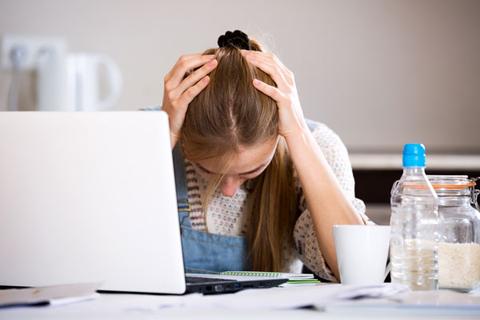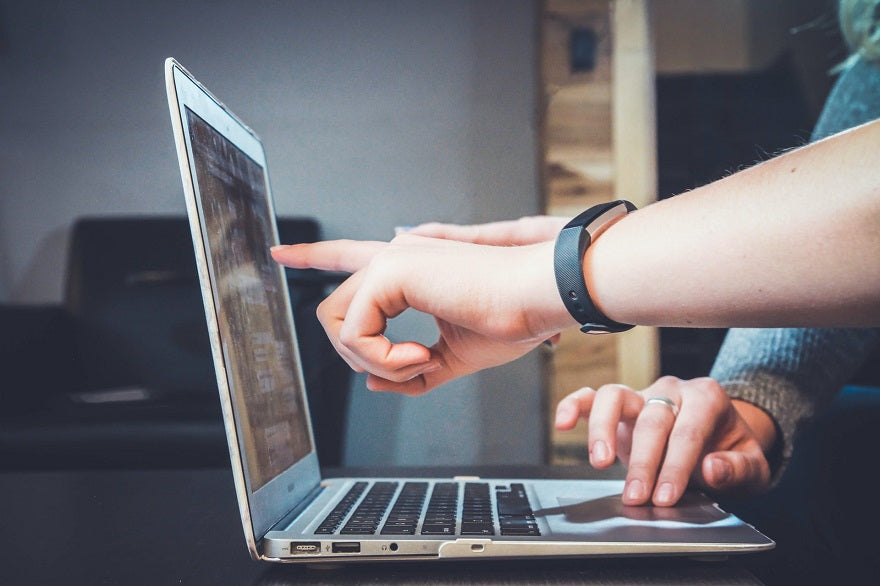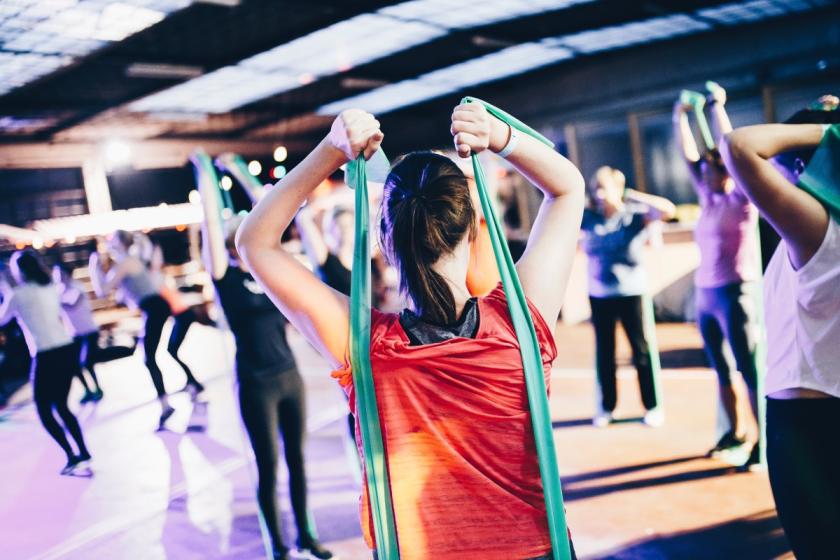
How To Stop Lower Back Pain Caused By Sitting At A Desk
People who work long hours tend to experience lower back pain when sitting. If you move around often, the cause of the problem is not being desk-bound. The culprit is probably your office chair. To better understand this condition and how you can address it properly, read on.
What are the Common Lower Back Pain Symptoms?
At one point or another, all of us experience back pain. Although considered to be more common among older people, there are instances whereby even those much younger (in their early 20s or teens) have them, too.
The type of pain you feel in the lumbar region (the scientific term for the lower back) is not exactly the same as that which afflicts the other parts of your back or the rest of your body. In a nutshell, the pain can cover certain parts or the entire area starting from your ribcage going down to your buttocks.
There is no mistaking lower back pain when it strikes. The intensity varies from mild to intense. More often than not, acute cases can disable sufferers from going about their usual duties.
Like everyone else, you too must have experienced this telltale “dull aching or stabbing pain” in your lower back. To learn more about the other lower back pain symptoms, take note of these details sourced from Healthline:
- Dull pain can also be in the form of sensations covering the lower back region.
- Stabbing pain, on the other hand, is piercing and shoots downwards starting from one point in the lower back going down to the leg or foot.
- Standing up straight is usually problematic or is impossible at the onset.
- Physical movements become limited
- Flexing the back becomes difficult or impossible.
In a nutshell, having lower back pain will make it hard for you to move around like you usually do. Acute cases strike without warning. They typically occur after engaging in sports activities or lifting heavy objects. But as in most cases, the pain eventually goes away.
Should it persist longer than three months, though, it is already considered chronic. With this, it is imperative that sufferers see a medical professional who will run tests to determine the specific causes for proper diagnosis.
How to Sit with Lower Back Pain: Correct Positions for Work, Leisure and Driving
The Cleveland Clinic advised sufferers to keep their spine curved in a normal way. Below are helpful guidelines that you or anyone who has had this condition must observe. These practices should be done after 10-20 days following the onset of pain.
How to Sit with Lower Back Pain while at Work and During Leisure Activities
- Limit sitting whenever possible and should be no longer than 10-15 minutes at a time.
- Put back support on your seat. Try using a rolled-up shirt/towel or small tube-shaped pillow just big enough to cover the curve of your back.
- Make sure that your hips and knees are at a correct angle. If needed, prop your feet on a foot stool
- Keep the feet flat on the floor and never cross the legs.
As an alternative to Sitting while working, consider purchasing a Standing Desk. Standing Desks are known for helping with a variety of health issues, and many owners of standing desks claim it has helped alleviate their back pain issues.
Shop All Standing Desks
How to Sit with Lower Back Pain When You Are Driving
- Place a back support (a rolled-up shirt/towel or tube-shaped pillow) on your seat. See to it that your knees are aligned (or slightly higher than) with your hips.
- To ensure that your back stays supported, move the seat closer to the steering wheel. Make sure that you leave enough space, so you can easily reach the pedals and bend your knees.
Three Easy and Safe Home Exercises for Lower Back Pain
Staying still for long periods or not moving at all will only worsen this condition. To alleviate it, you need to move around. However, you have to do it carefully. There are specific exercises designed to help ease sore muscles. Below are three home exercises for lower back pain that you can do any time of day.

Stretch Your Hamstrings
Hamstring stretches ease tension in your back legs. These parts hold some of the muscles that support your lower back.
- Lie flat on the floor while keeping your left leg’s knee bent and the right one stretched upwards.
- Loop a towel (or any piece of cloth that is long enough, so you can easily hold both ends) underneath the ball of your stretched-out leg’s foot.
- Pull the towel towards you slowly. Keep your knee straight. Now, feel that gentle stretch running along the back of your leg.
- Hold your position for 15-30 seconds.
- Repeat this with the same leg one more time. Then, do the same with the other leg (2 stretches for each leg).
Do Partial (Not Full) Crunches
A certified classic that is still effective to this day, crunches are doable, even for people with lower back pain. However, experts advise that you do partial crunches instead to avoid straining your lower back further.
- Lie down with your knees bent and feet placed firmly on the floor.
- You can either put your arms at the back of your head or cross them in front of your chest.
- While holding your tummy in, gently raise your shoulders off the floor. Inhale as you do this.
- Upon lifting your shoulders off the floor, exhale. Raise your shoulders using the strength of your abdominal muscles. Avoid using your shoulder muscles or pushing your head with your hands.
Take Breaks by Doing Wall Sits
Back pain sufferers will benefit more from doing wall sits instead of using the couch. Probably, one of the easiest exercises to date, do it by following these steps:
- Stand with your back facing the wall. Keep a distance of 10-12 inches between yourself and the wall.
- Now, slowly lean onto the wall until your back is resting firmly against it.
- Slide down carefully, bending your knees slightly as you do so. Keep your back flat on the wall.
- Hold your position for 10 seconds before sliding back up gently, straightening your knees as you do so.
- Repeat this move 8 up to 12 times.
Shop All Standing Desks
How to Treat Lower Back Pain at Home: Proven Methods
If you have been wondering how to treat lower back pain at home, all you need to do is follow these pieces of advice shared by WebMD and Prevention. Take note, however, that these tried-and-tested measures are intended to be applied for non-chronic conditions.
Chronic conditions and other serious cases, which sometimes occur after an injury, will be accompanied by other symptoms. These include tingling legs, numbness or physical weakness. If these apply to you, it will be in your best interest to seek medical advice first before performing any of these methods.
- Apply an ice pack to the affected area. Medical experts say that you should do this within 24-48 hours after an injury. The coldness reduces the pain while relaxing the muscles.
- Get on with your usual activities—but make sure not to overdo it. Staying still all the time or not moving at all is not how to treat lower back pain. Indeed, moving can be troublesome. That is why; you should do things slowly and carefully.
- Sleep on a medium-firm mattress. If you have slept on your bed for over a decade, chances are, it no longer supports your back as well as it used to. At best, check the firmness and replace it with a new one if needed.
- Ditch those high-heeled shoes. Walking around in platform shoes or stilettos can strain your legs and lower back over time. Go for sandals, sneakers, flats or any type of shoes that is either flat or have heels no higher than two inches.
- Replace your old chair with an ergonomically designed unit. Like mattresses, your chair should be designed to provide your back the support it needs. Therefore, it is only reasonable that you get one that is ergonomically designed. If the seat you are using does not fit the bill, then it is high time that you start shopping for a replacement.

The Best Office Chair for Sitting Long Hours
If you think you can use any type of office chair for your workstation, think again. Because you will be using it for a long time, you need to choose the best office chair for sitting long hours. This means that it is not only built sturdily, but also designed ergonomically. Such quality translates to the following features, shared on Republic Lab. Keep these in mind when canvassing for new units:
- The height of the seat can be easily adjusted between 16-21 inches off the floor with a pneumatic adjustment lever.
- The seat should be wide enough to support the user while ensuring total comfort. A standard of 17-21 inches width works well. The depth, which covers the front to the back of the seat, must be just wide enough that you can lean back comfortably on the backrest.
- A chair designed based on exacting ergonomic standards has lumbar support. This is an important component that lets you adjust the height and depth of the chair. With it, you can look forward to sitting comfortably for long periods without straining your lower back muscles.
- A width of 12-19 inches for the backrest suffices to ensure comfort. If this component is not built-in, make sure that it has a part for adjusting the height and angle.
- The best office chair for sitting long hours should be padded comfortably enough to guarantee comfort even if you sit for long periods. Skip hard surfaces and go for seats with a nice cloth material that lets your skin breathe.
- The chair should swivel easily, allowing users to face different areas of his or her workstation, with ease. If you want something with an armrest, make sure that it is adjustable, so you do not strain your shoulders or lower arms.
Standing Desks and Lower Back Pain
When it comes to helping with Lower Back Pain caused by sitting for hours at a time - many patients and pain-sufferers have found relief for their problems by simply switching from a traditional desk and chair in the office to a standing desk. To find the right standing desk for your office, check out the link below.

